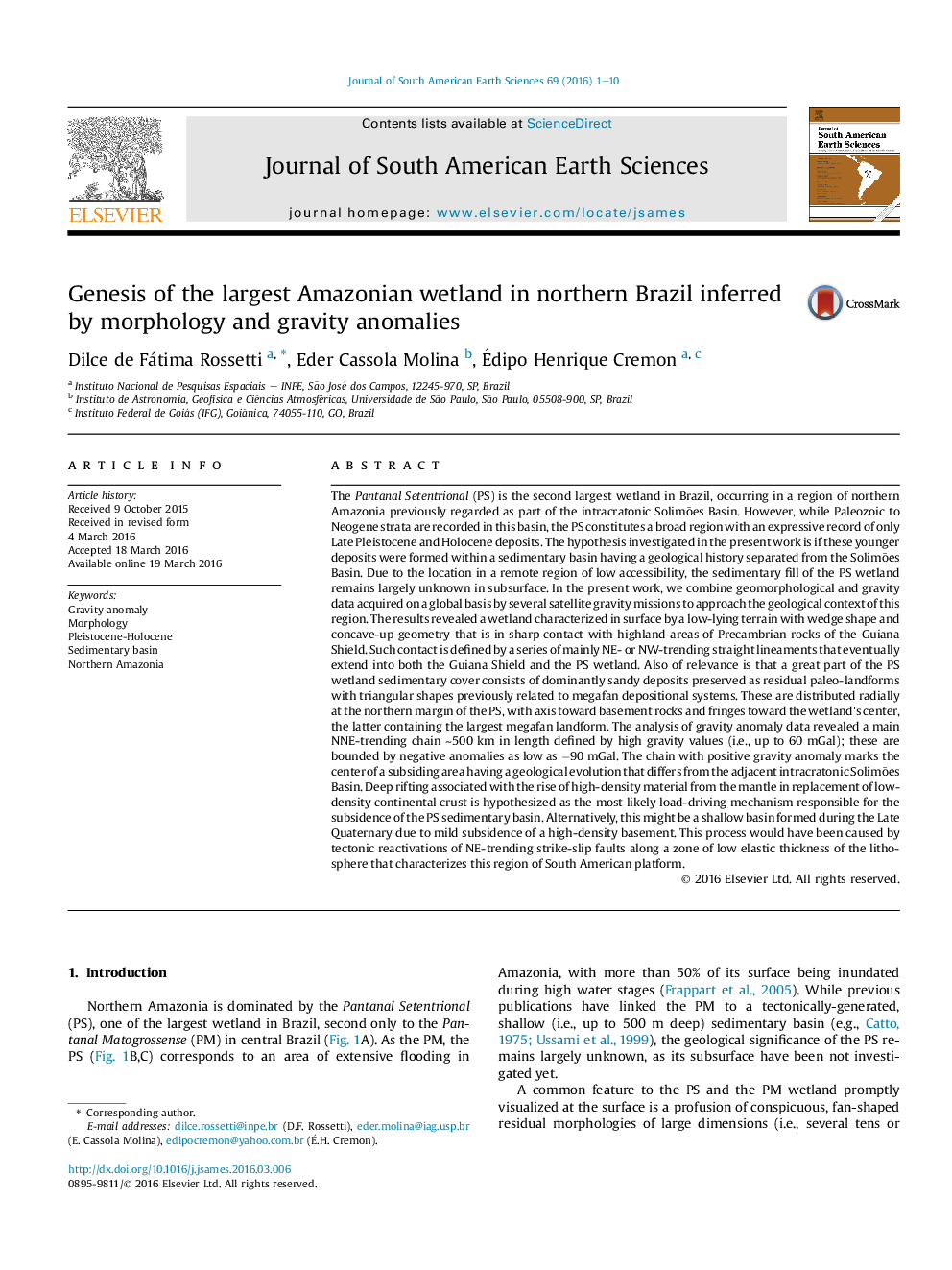| کد مقاله | کد نشریه | سال انتشار | مقاله انگلیسی | نسخه تمام متن |
|---|---|---|---|---|
| 4682066 | 1635141 | 2016 | 10 صفحه PDF | دانلود رایگان |
• The origin of the largest Amazonian wetland is analyzed.
• The work was carried out based on geophysical gravity anomaly data.
• A shallow Quaternary sedimentary basin is recognized in the Negro-Branco basins.
• Its most likely origin is subsidence of a high-density basement.
• The cause was reactivation of a zone of low elastic thickness of the lithosphere.
The Pantanal Setentrional (PS) is the second largest wetland in Brazil, occurring in a region of northern Amazonia previously regarded as part of the intracratonic Solimões Basin. However, while Paleozoic to Neogene strata are recorded in this basin, the PS constitutes a broad region with an expressive record of only Late Pleistocene and Holocene deposits. The hypothesis investigated in the present work is if these younger deposits were formed within a sedimentary basin having a geological history separated from the Solimões Basin. Due to the location in a remote region of low accessibility, the sedimentary fill of the PS wetland remains largely unknown in subsurface. In the present work, we combine geomorphological and gravity data acquired on a global basis by several satellite gravity missions to approach the geological context of this region. The results revealed a wetland characterized in surface by a low-lying terrain with wedge shape and concave-up geometry that is in sharp contact with highland areas of Precambrian rocks of the Guiana Shield. Such contact is defined by a series of mainly NE- or NW-trending straight lineaments that eventually extend into both the Guiana Shield and the PS wetland. Also of relevance is that a great part of the PS wetland sedimentary cover consists of dominantly sandy deposits preserved as residual paleo-landforms with triangular shapes previously related to megafan depositional systems. These are distributed radially at the northern margin of the PS, with axis toward basement rocks and fringes toward the wetland's center, the latter containing the largest megafan landform. The analysis of gravity anomaly data revealed a main NNE-trending chain ∼500 km in length defined by high gravity values (i.e., up to 60 mGal); these are bounded by negative anomalies as low as −90 mGal. The chain with positive gravity anomaly marks the center of a subsiding area having a geological evolution that differs from the adjacent intracratonic Solimões Basin. Deep rifting associated with the rise of high-density material from the mantle in replacement of low-density continental crust is hypothesized as the most likely load-driving mechanism responsible for the subsidence of the PS sedimentary basin. Alternatively, this might be a shallow basin formed during the Late Quaternary due to mild subsidence of a high-density basement. This process would have been caused by tectonic reactivations of NE-trending strike-slip faults along a zone of low elastic thickness of the lithosphere that characterizes this region of South American platform.
Figure optionsDownload as PowerPoint slide
Journal: Journal of South American Earth Sciences - Volume 69, August 2016, Pages 1–10
